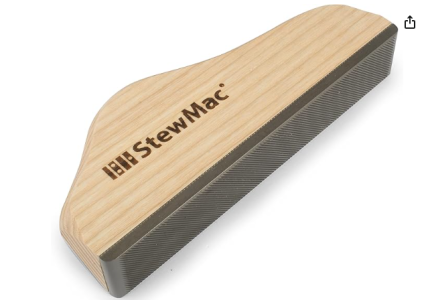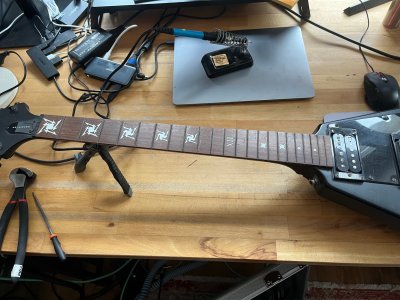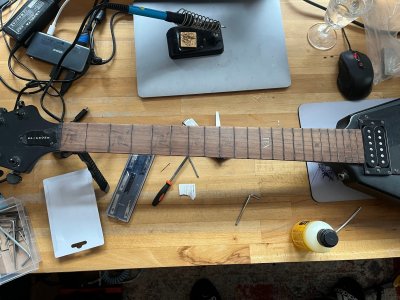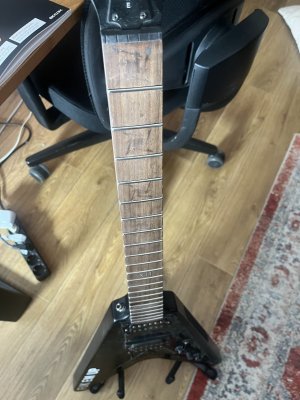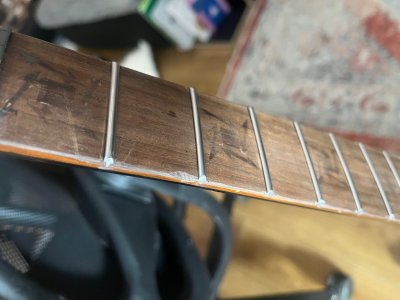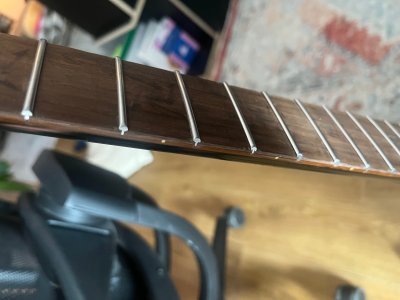Not sure if this helps, but.....
I'm doing my 1st fret install on my 1st electric guitar....1975 Les Paul Deluxe routed for humbuckers. The construction of Les Pauls during this period (IIRC, the era is called Nolin?), as the body has 2 planks of mahogany glued together, but the big thing is the neck shaft is made from 3 pieces of maple and the neck has a volute. I watched this guitar fall out of a cheap cardboard case and bounce down a flight of metal stairs on the top edge of the headstock, and aside from chips in the finish, the guitar was fine. Conversely, the other LP I own is a '92 LPC with the traditional construction of a 1 piece mahogany neck with no volute, and I've had 3 separate headstock breakages.
I beat the snot out of this guitar as a teenager, the treble side of the neck has a large gouge in the binding around the 9th fret, the bridge pickup cuts in/out, and half the control knobs don't work. This project includes replacing the binding on the treble side of the neck (already done), full fret install (in the works) and an overhaul of the electronics (yet to be done).
I learned, leaving the soldering iron on the fret LONGER is better than too short
Binding being installed....
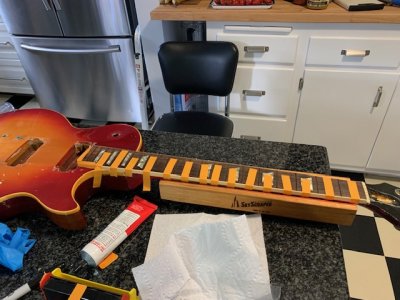
Binding installed. You can see where the gouge was around the 9th fret, as the binding kind of fills this area.
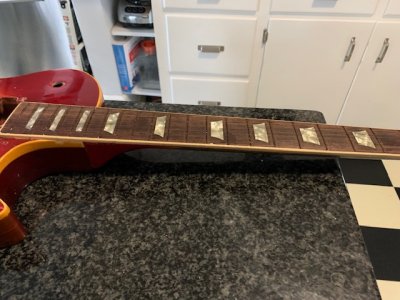
Radius sanding block ...getting the fretboard perfectly radiused. The guitar is literally 50 years old. I wasn't surprised that the fretboard wasn't radiused as it should be.
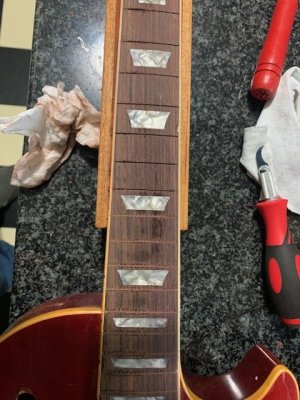
Frets installed - A word of advice, when bending the frets for the radius, definitely bend them to a tighter radius than your neck. I had to recut a few frets since the radius on the fret bender wasn't tight enough. Also, I used SuperGlue to hold in the frets. Left a bit of a mess on the fretboard. This will be corrected with a lot of patience
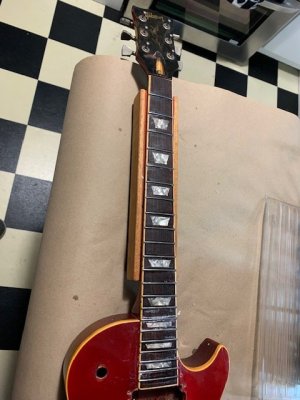
Fret beveling - I used the Music Nomad beveling block for this process. Great tool. Couldn't get this done quick enough, since I sliced my hand 3x with the sharp fret ends
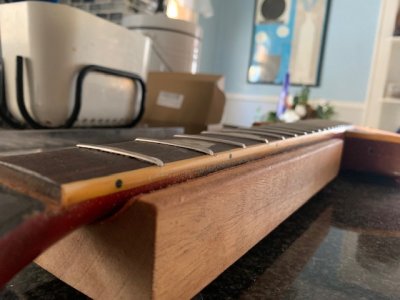
Crowning the frets with the tool from Fret Guru
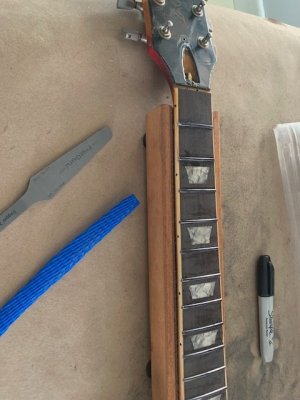
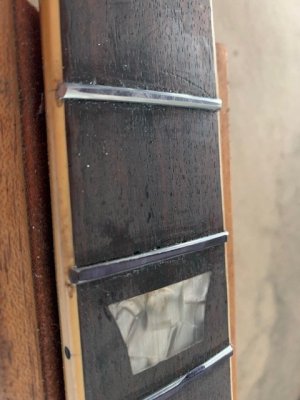
And now in the process of finishing the fret ends. Once that's done, then have to cleanup the fretboard and polish out the scratches.
Don't worry about SS frets. You will be fine working on them. Also, while Stewmac has great tools, there are a few other options that come in at a better value proposition. I went with some tools from Music Nomad and Guryxxxxx (can't remember the name, but it starts with Gur), all purchased from Amazon.
Also, consider a radiussed sanding black. I found this very helpful for making sure the fretboard itself was consistently radiussed, as well as leveling the frets.

)







